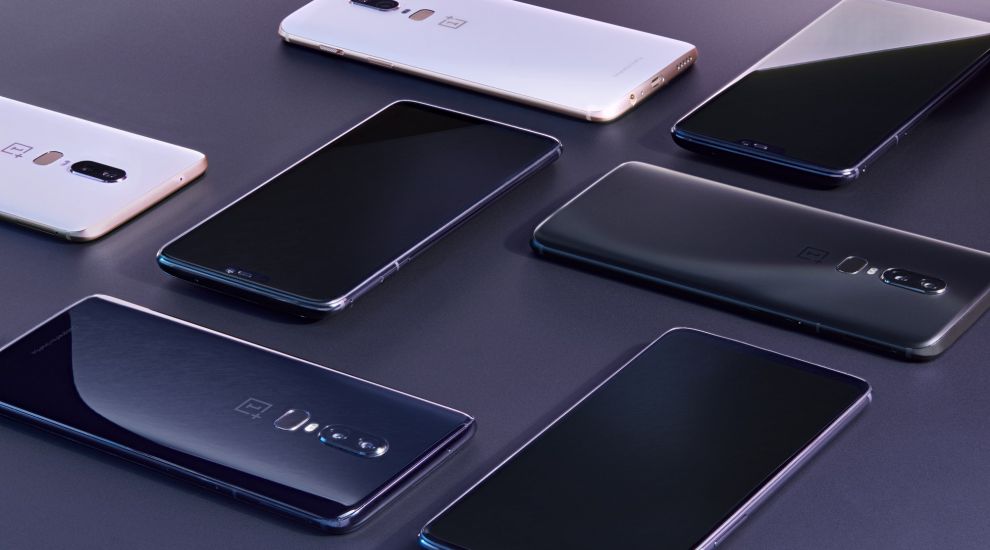
The new OnePlus 6 has a clear aim: to offer a genuine alternative to the Apple and Samsung phones of this world, but at almost half the price.
It’s a bold strategy the company has been pushing for four years, but this year’s OnePlus 6 feels like the closest the Chinese firm has come to becoming a true disrupter at the top of the smartphone market.
Loaded with features found on 2018’s other premium flagship devices, and now sporting a glass design OnePlus says is its most high-end ever, the OnePlus 6 has the specs to back up its disruptive ambitions.
So, what is it like to live with?

The OnePlus 6 is the first phone from the company to have glass on both the front and back – a feature increasingly being used in premium smartphones.
The result is a sleek device that looks smart in each of three colour finishes, but also sits nicely in the hand.
As with any glass-backed phone, fingerprint smears remain a real problem, so a phone case or keeping a cloth close by remain unfortunate musts of owning a modern smartphone you want to keep looking its best.
As for the front panel and screen, OnePlus has followed two more industry trends for this year, the first of which is expanding screen size without making the rest of the device larger in the process.
This is done by reducing the borders on all sides – leaving only a small “chin” at the bottom of the phone – and introducing a notch at the top, the other big trend of the moment.

The small dent in the screen space is used to house sensors and lenses for the front-facing camera. However, should you not be a fan of the notch, OnePlus includes a software option that enables users to block out part of the top of the screen, making the notch disappear in the process.
In terms of unique features, the OnePlus 6 houses a smart three-setting alert button, which enables users to quickly set the phone between loud, vibrate and silent alert modes.

That new display on the OnePlus 6 is the largest the company has made at 6.28in, and the AMOLED screen is bright and clear.
It helps too that the 6 is a very responsive device performance-wise, thanks to top-of-the-range specs that include the latest Qualcomm Snapdragon 845 processor.
As a result the entire interface is fast and responsive, with apps opening quickly, and the Face Unlock facial recognition system opening the device in a flash.
OnePlus’s motto for this phone is “the speed you need” and it more than delivers on that promise in responsiveness and general performance.
Battery life too is very good, not only for how long the phone lasts on a charge, but also how quick it is to regain it once plugged in.
On a single charge the OnePlus 6 comfortably lasted more than a day on heavy use – extending into several days if you’re a not a heavy smartphone user. Even when you do have to plug in the phone, you won’t have to do so for long thanks to OnePlus’s Dash Charge technology.
This efficiently powers up the phone quickly – it will hit more than more than 70% in less than 40 minutes – meaning that combined with the long battery life, keeping an eye on battery percentage is not something users really have to worry about.
As for the 6’s operating system, it is powered by Android, but with OnePlus’s own OxygenOS layered on top, adding a few minor tools.
Among them is the ability to customise the virtual buttons or gestures used to navigate on the device, as well as that software tool to cover the notch.
For the most part however, the operating system sticks close to its Android roots, rivalling any of the other Android flagships out there for the general experience, if not quite having as much power of artificial intelligence at its heart.

A key area for any new smartphone, the camera system on the OnePlus 6 is solid to use, if unspectacular.
It offers bright, clear images that will more than satisfy the average smartphone user, but doesn’t quite match the high-end image reproduction of other flagships such as the Samsung Galaxy S9 or Huawei P20 Pro.
The 6 has 16 and 20-megapixel sensors as its dual rear camera system, combined with another 16-megapixel camera on the front.
Naturally, it supports a Portrait mode for those soft background focus images that have become a smartphone staple in the last year.
OnePlus has also doubled down on the growing trend of slow-motion video, introducing the ability to capture slow-mo for up to a minute – creating six minutes of total footage – giving users more than enough space to capture that desired moment from a unique perspective.
The OnePlus 6 does so much right in its pursuit of a position as the great disrupter of the premium smartphone market.
For a flagship phone that costs less than £500 to offer as much as the 6 does is not only a great achievement but is also a victory for consumers, who now have another viable option when it comes to upgrade.
Starting at £469, the OnePlus 6 proves you don’t have to spend the £700-£1,000 it costs to get a flagship phone in 2018.
However, it does lack a real headline-grabbing feature on which to hook its experience. It does everything well, without outdoing its competition in any field.
This is OnePlus’s best phone by some distance, and is incredible value, even if it’s not quite a showstopper.